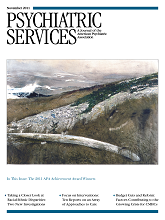Interpreting Risk Factors for Violence in Australia
However, given the extremely small sample associated with firearms misuse (16 out of 272 cases between 1992 and 2008), we suggest that general conclusions about the availability of means are somewhat premature. We must also correct the assertion that Australia's 1996 gun laws were followed by a steady decline in the use of firearms in homicide and suicide. This claim, based in part on now-discredited work (2), overlooks the fact that homicides and suicides by firearm were both declining well before the contentious and highly politicized legislative changes occurred. Several recent studies have shown that the legislative changes did not have a significant impact on the preexisting downward trend in firearm homicide in Australia (3). Method substitution and concurrent declines in suicide by means other than firearms, along with the introduction of national suicide prevention programs, preclude drawing firm conclusions about the impact of the laws on suicide by firearm (4).
Although these observations should certainly not detract from the work of Dr. Nielssen and his colleagues, they do provide a strong caution against inferring that Australia's gun laws have played any significant role in reducing the incidence of lethal violence (to self or others). The costs of administering the legislation are estimated to range between $27 and $100 million per year—or between $405 million and $1.5 billion over the 15 years since they were implemented (5). This leads inevitably to speculation on what gains could be achieved if that funding was instead directed toward early intervention and ongoing support for vulnerable Australians living with mental illness.
1 : Comparison of first-episode and previously treated persons with psychosis found NGMI for a violent offense. Psychiatric Services 62:759–764, 2011 Link, Google Scholar
2 : A submission to the Senate Community Affairs Reference Committee Inquiry Into Suicide in Australia, 2009. Available at www.ic-wish.org/McPhedran%20Baker%20Suicide%20in%20Australia%20Senate%20Submission_Nov%2009.pdf Google Scholar
3 : The Australian firearms buyback and its effect on gun deaths. Contemporary Economic Policy 28:65–79, 2010 Crossref, Google Scholar
4 : Controlling firearms use in Australia: has the 1996 gun law reform produced the decrease in rates of suicide with this method? Social Psychiatry and Psychiatric Epidemiology 44:285–292, 2009 Crossref, Medline, Google Scholar
5 National Firearms Management System Business Case Project. Canberra, Australia, Nous Group, 2007 Google Scholar



